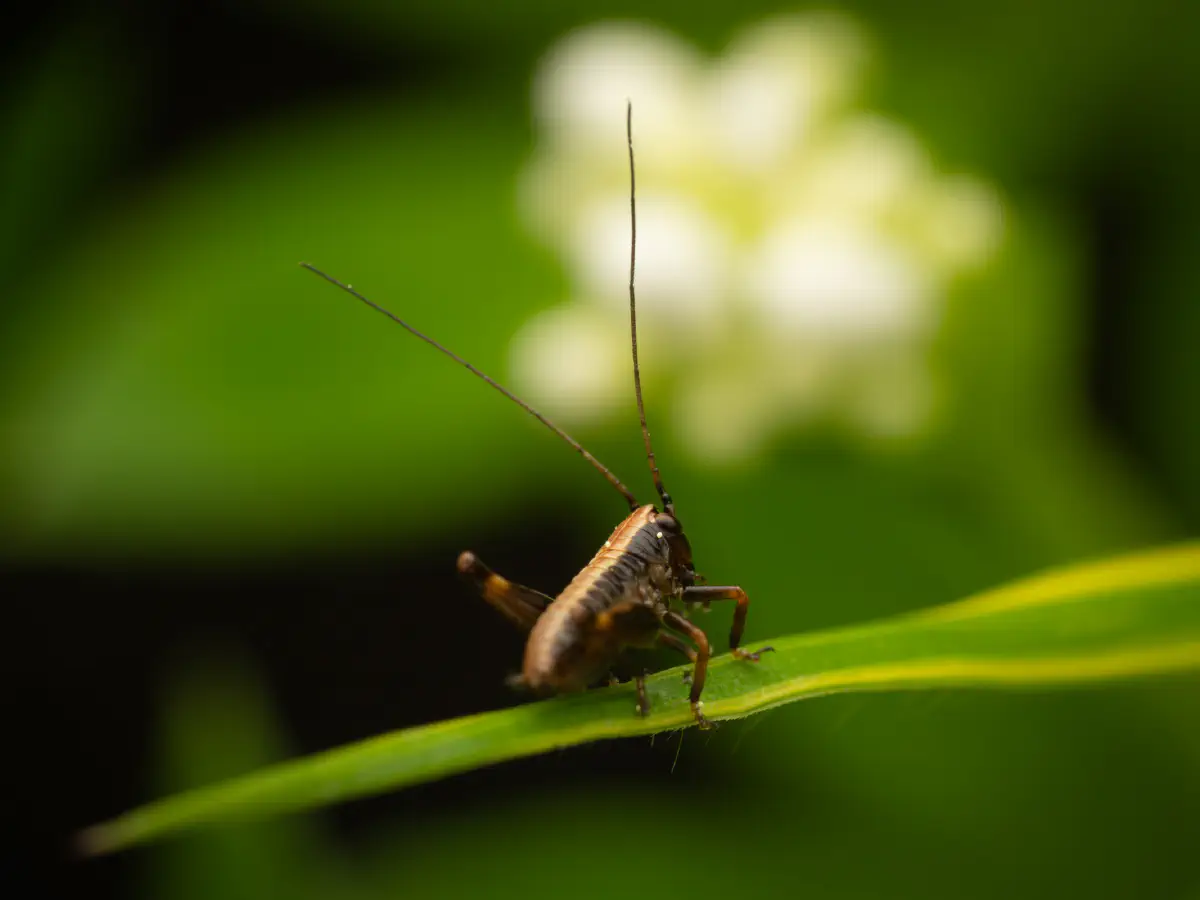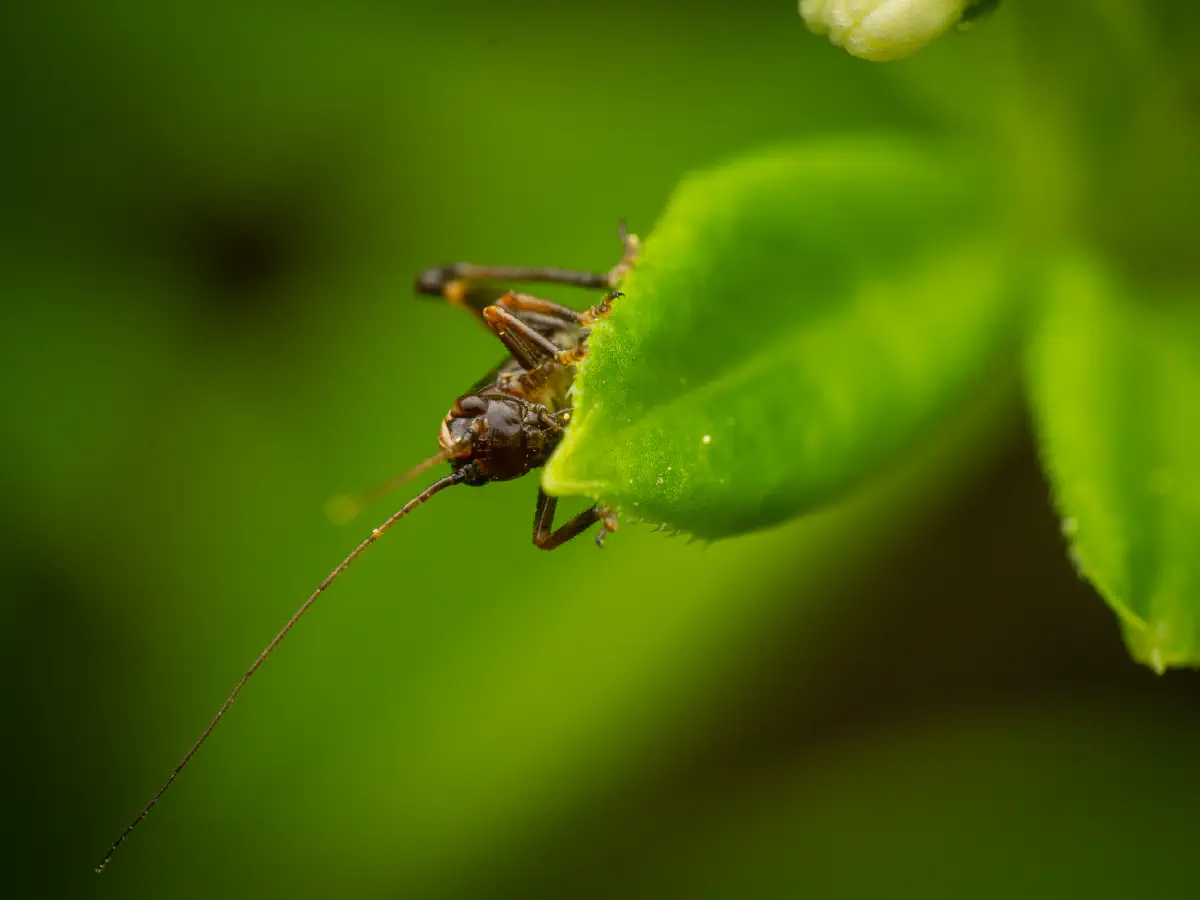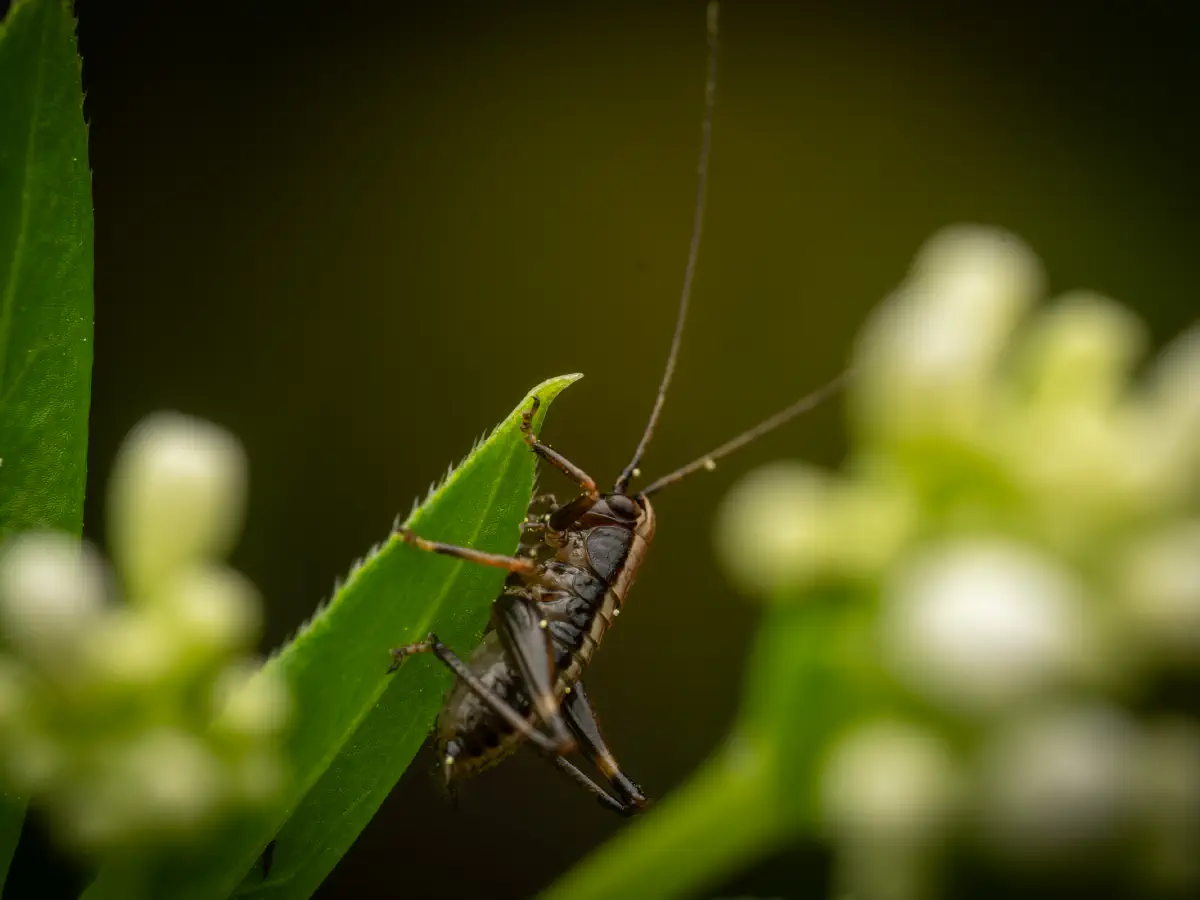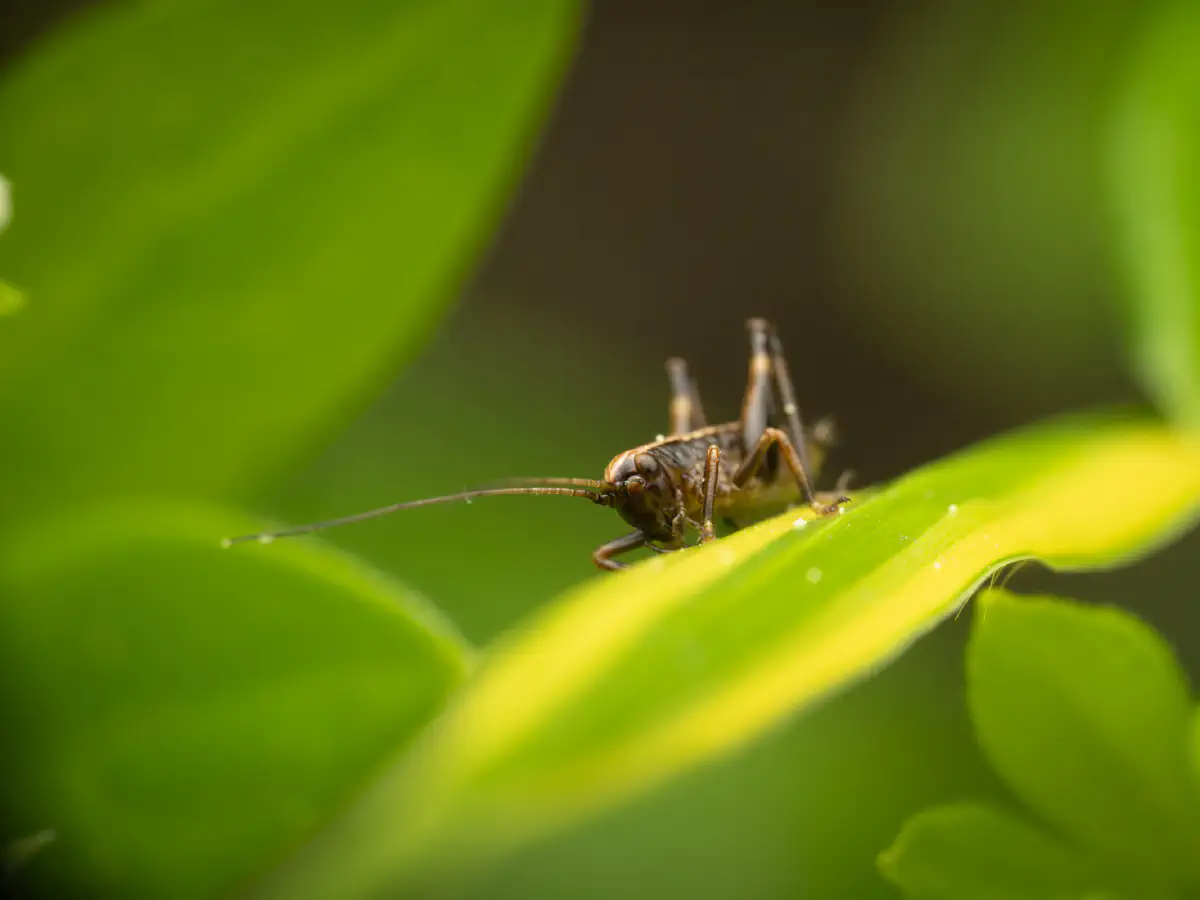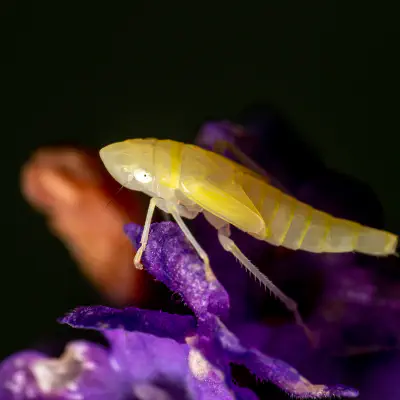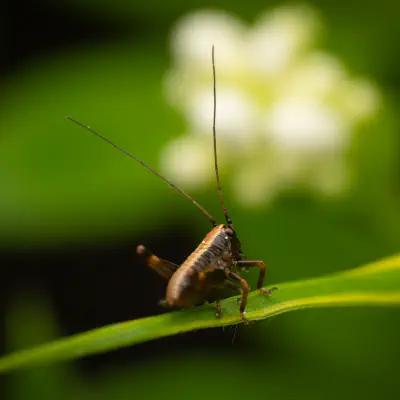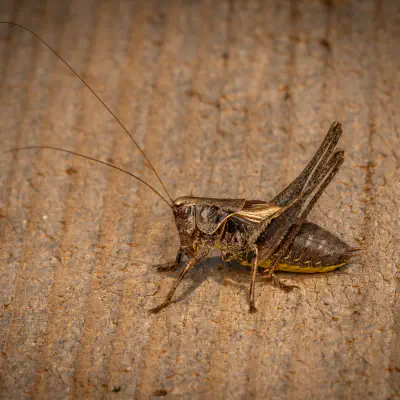Pholidoptera griseoaptera can reach a body length of 11 to 21 mm (males) and 15 to 20 mm (females), much smaller than the similar Pholidoptera aptera. The sickle-shaped and upward curved ovipositor of the females is 8 to 10 mm long, while the males have two short cerci. The antennae and the hind legs are quite long. The rounded brachypterous wings of the males are brown with light brown to ochre-coloured edges and are about 5
mm in length (about as long as the pronotum). The females are almost wingless or have half-round, grey-brown fore-wings that are 1–2 mm long. Long-winged (macropterous) forms are not recorded.
